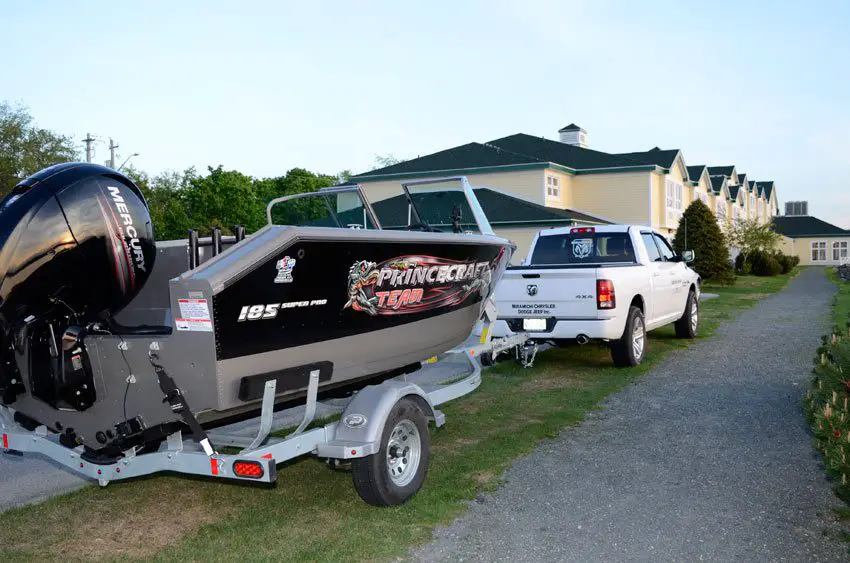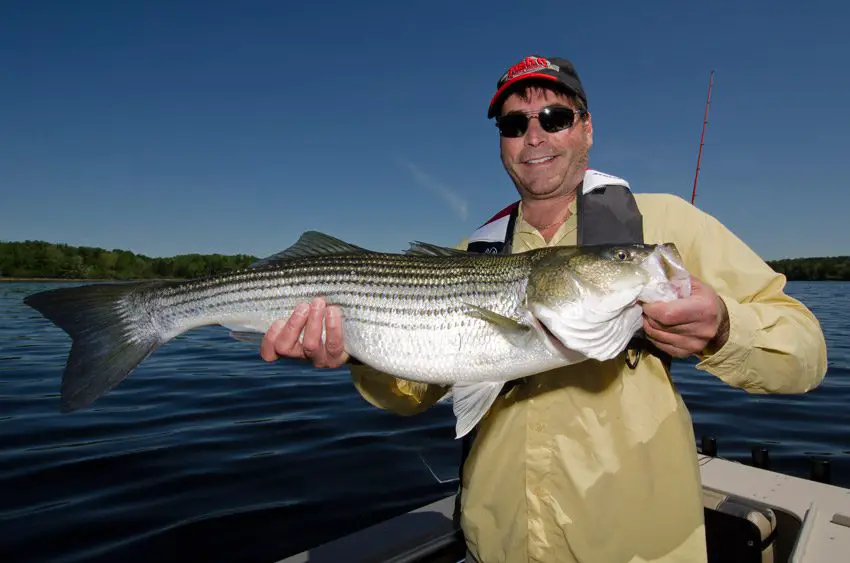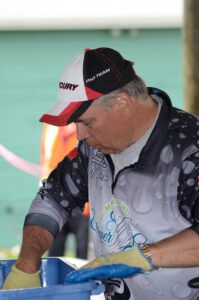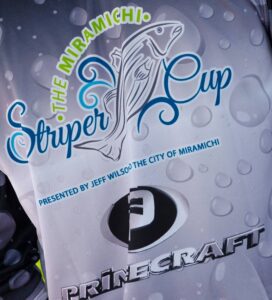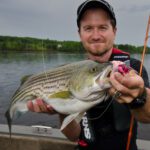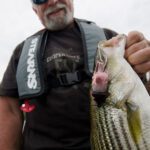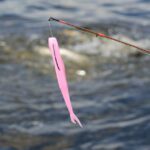Our new season is about to start and we have to admit, we love coming out of the gate full blast! In this first episode of the 2015/16 season, we venture east to an iconic fishing destination, the quintessential Atlantic Salmon river known as the Miramichi. Since the beginning of documented times, Salmon have migrated up this waterway in search of their maternal spawning grounds.
Unfortunately, global over-harvesting has taken its toll on the Atlantic Salmon stocks, and the Miramichi is no exception. But today finds us here in search of another once-at-risk species that is actually enjoying a resurgence and, in fact, has prompted the creation of a brand new fishing tournament: The Striper Cup, headquartered in the city of Miramichi, New Brunswick.
Miramichi is the largest city in northern New Brunswick. The area has been continuously inhabited for over 3,000 years. By the middle of the 19th century, Beaubears Island was the largest shipbuilding and commercial establishment in this part of Canada, and played a major role in crafting our nation’s history. It’s now a Canadian heritage site, as evidenced by tall masts that have become a landmark for Miramichi.
For generations, tidal saltwater flowed inland and created an ecosystem for anadromous fish species such as Salmon, Sturgeon, Alewife, and Striped Bass that seasonally moved up the estuaries in large numbers.
Sadly, we’ve made some big mistakes throughout our history in terms of over-harvesting fish stocks. Today, however, by using good fishery management protocols, we can see a trend shifting towards sustainability and possibly even growth. A great example is the Miramichi Striped Bass fishery which had to be shut down in 2004.
Fortunately for us, these fish are prolific. A mature female can broadcast up to three million eggs in a season. So by 2013, the Department of Fisheries and Oceans opened up the fishery in the waters adjacent to the Maritime Provinces in the southern Gulf of St. Lawrence.
IT’S HARD TO BELIEVE
What better way to celebrate the explosive resurgence of this fishery than to have a fishing tournament? The townsfolk call it the Striper Cup. The winner, with the highest two-day total for four fish, gets a $5,000 cash prize. There’s also a grand prize draw for a gorgeous Princecraft boat and matching Four-Stroke Merc. Not too shabby for an inaugural fishing tournament!
Although we do cover the event throughout the show, the main purpose for our travel east is to sample some of this incredible fishery for ourselves. Joining us in this show is good buddy Joe Anthony, outdoorsman extraordinaire, who has his finger on the pulse of this east coast fishery.
This episode is all about the miraculous revival of the Striped Bass. Today, anglers are allowed to have just one fish in their possession and it must be between 55 and 65 centimetres. Everything else must be released. A special temporary variance was obtained for this event to allow for a two fish limit per angler. At the time of our filming there was an estimated 250,000 fish in the northwest fork of the Miramichi doing their thing to keep their numbers growing.
The fish themselves, being as prolific as they are, have made an extraordinary comeback. Increasing water temperatures in the spring cause them to arrive from April to June from the Gulf and the Eastern Seaboard and migrate into the fast flowing waters of the northwest fork of the Miramichi. In a ten kilometre stretch of river, they turn the water black with their presence and white with their spawning, which can last between three to four weeks for large spawning groups like this one.
“It’s hard to believe,” says Pete, “that the Striped Bass fishery was completely shut down from 2004 until 2013 because the DFO deemed these fish endangered. What’s great about this fishery is that it’s a testament to good, sound fishery management. Something’s obviously working.”
During spawning, many males will surround a single large female and bump her up to the water’s surface. While they’re jockeying for position, the female turns sideways and the males continue to bump her vigorously, causing her to release her eggs. We actually saw this mayhem on the water and it was nothing short of incredible!
As the eggs are discharged and scattered the males release milt, turning the water milky white. Spawning can last several days. During spawning, a female can releases between half a million to three million eggs. Unlike salmonids, Striped Bass will continue to eat during the spawning cycle, stopping only long enough to release their eggs or milt.
Fertilized Striped Bass eggs need to be carried by water currents until hatching, about 48 to 72 hours, to avoid suffocation.
The water current must be strong enough and the river distance long enough to keep the eggs and young from settling to the river bottom. If the eggs sink to the bottom they die because sediments reduce oxygen exchange between the egg and the surrounding water. This is the most critical period for young stripers.
Less than one percent of the eggs will survive the first two months. The eggs usually hatch between 48 to 72 hours. The length of time may be shorter or longer depending upon temperature; hatching is quickest in warmer water.
Initially, small Bass feed on tiny crustacean plankton, but after a few weeks, the favourite food becomes shrimp and amphipods, and these are most numerous where salt levels are 1–20 percent of sea water. Young Striped Bass are most numerous in the same area. Striped Bass grow fast; reaching a size of 10 to 12 inches during the first year and can live 20+ years.
MIGHTY MO vs THE STRIPER BASS
Males mature at two or three years, and females have their first spawn at five or six years.
It takes several years for spawning females to reach full productivity.
An average six year old female produces half a million eggs while a fifteen year old can produce three million.
Now that we’ve got all the technical stuff out of the way, you may be wondering, So, how was the fishing?
Well… many times throughout the day, the boys were battling triple headers with 20, 30 and 40+ fish following the hooked fish, just waiting for a shot at a bait. The incredible part of this, though, was we soon figured that it was the males aggressively going after every single female on the river, hooked or not. We started trying everything we could to distract the males, and hopefully then lure the females out of the mayhem since they were the bigger of the two.
Joe even tried some traditional Miramichi fly fishing and got into a few Stripers, but with two other guys casting and a cameraman in the boat, he soon ditched the local favourite fly fishing rod for a more traditional baitcasting setup.
“During a rare lull in the incredible fishing action,” says Ang, “both Pete and I grabbed another rod with our secret weapon, the Mighty Mo. Sure enough, our little rodent pal made a few new friends just under the waves on the Miramichi.”
In a nutshell, pretty much anything worked, but we did end up with some favourites aside from Mighty Mo. Our host for the trip, local Bass stick Jeff Wilson, put us on to the best presentation which was throwing a bright-coloured Fluke style bait on an unweighted wide gap worm hook. Braid was a must as a strong hookset was needed. Pink and White seemed to be the best colours. This shoot was also our inaugural trip with our newest fishing partner, Carrot Styx fishing rods, and they tamed these tough saltwater fighters without a problem!
All in all, a very successful couple of days on the water.
Don’t worry we didn’t forget about the Striper Cup. It seems the whole town has come out to cheer the participants on. No matter the level of skill, equipment on hand, or the size of the boat, everybody’s welcome on the Miramichi.
Another one of the benefits of having this event is the great opportunity it provides for the Miramichi River Environmental Assessment Committee and the DFO to collect data for the ongoing stock and habitat assessment and management work on the Miramichi. This ten kilometre stretch of river is the only spawning ground for Striped Bass in the Gulf of St. Lawrence. It’s this careful and intelligent management of the Striper fishery that has allowed this spectacular event to even happen!
SPECIAL THANKS
- Jeff Wilson – Striper Cup organizer, Vice President Sales, Carboline Canada & Group Vice President, Atlantic Provinces
- Serge Collin – Media Relations for the Province of New Brunswick
- Jeffrey MacTavish – Economic Development and Tourism for City of Miramichi
- Rodd Miramichi Resort
- Miramichi Chrysler Dodge Jeep Inc. – Dealership that loaned Ram
- Cabano Marine & Sports – Boat marina that loaned Princecraft





